Music
Trailers
DailyVideos
India
Pakistan
Afghanistan
Bangladesh
Srilanka
Nepal
Thailand
StockMarket
Business
Technology
Startup
Trending Videos
Coupons
Football
Search
Download App in Playstore
Download App
Best Collections
Technology
Cryptocurrencies: a weird agglomerate of fascinating technology built by brilliant engineers; a whole new and potentially important form of economics; … and hype-machine puffed-up crazy-talk nonsense. So, as you might expect, they also combine state-of-the art resilient engineering and comical clown-car so-called security. Yes, thatright — I want to talk about IOTA, and (to an extent) Bitcoin Cash.
Modern security practices include: an understanding of and commitment to responsible disclosure; making yourself available and accessible to third-party security researchers; offering bug bounties; fuzzing your code; etcetera. They also include valuable truisms such as &don&t roll your own crypto.& Here thatcrypto as in cryptography, and it means, always always always use tried and time-tested cryptographic algorithms and implementations. Do not try to build your own from scratch. You will regret it.
IOTA, currently the worldtenth most valuable cryptocurrency, took an … assertively contrarian stance regarding this dictum. They didn&t just roll their own crypto, they rolled their own fundamental units, deciding that binary wasn&t good enough by half, and that trinary was where itat, that their trits and trytes were so much better than bits and bytes.
I confess part of me has a grudging respect for the surreality of this kind of whackadoodle performance art. Alas, this half-admiration doesn&t extend to the recent saga in which a) they rolled their own crypto; b) MIT and BU researchers found a flaw in it; c) IOTA first said that the flaw was intentional, and then, apparently, that it was created by an imperfect AI (!); d) a spectacular war of words (between those parties and several others) erupted. Then, yesterday, Neha Narula, the director of MITDigital Currency Initiative, presented last yearwork in a talk at Black Hat — and even though that work stemmed from last year …
I interviewed Narula this morning and she said, still amazed, that it actually seemed to her as if IOTA thought her talk yesterday would reveal a new, previously undisclosed vulnerability. Their fundamental misunderstanding of how software security works, and what responsible disclosure means, is staggering.
You may well think IOTA is such an extremely ridiculous project that itunfair to use it as an example. But if so, bear in mind that cryptocurrencies remain a very weird field, and many people who have put a lot of money into them are unable to distinguish ridiculous projects from serious ones. A couple of days ago I visited Las Vegas&cryptocurrency nightclub,& all too appropriately called MORE; the general idea is that people can both invest in MoreCoin (yes, really) and spend it on better access / parties at Vegas and similar destinations. Whether you think this is a valid concept or a crazy get-rich-quick scheme, itan example of how cryptocurrencies are increasingly aimed at the unsophisticated public. To its intended audience, therenot much difference between MoreCoin and Bitcoin; any technical ludicrousness is no bar to success.
But if you want to talk about something more serious and higher-profile, fine; lettalk about Narulamost recent post, this one describing and regarding a bug in Bitcoin Cash, one of the very few currencies traded on Coinbase. Some months ago, a developer, Cory Fields, discovered that the hard fork which birthed Bitcoin Cash included some refactoring of Bitcoinconsensus code … such that a malicious block could be crafted which would split Bitcoin Cash into two separate blockchains.
This would be very bad, would almost certainly have drastically diminished Bitcoin Cashvalue, and could conceivably be used for a double-spend attack; meaning, given Bitcoin Cashvalue and liquidity, it was a bug which could conceivably have been used to generate many millions of dollars in cold hard cash. Fortunately Fields is an admirable fellow and decided to do the right thing.
But … how Who to contact The people with commit rights to the Bitcoin Cash repo, he supposed; but none of them had provided secure methods of public contact. This was information that could be used to bilk many millions of dollars, it couldn&t be emailed in plaintext — and whatmore, if somebody else discovered the bug but this Core developer was the only one known to have discovered it, he would be painting a big target on his back. How can you perform responsible disclosure when thereno outlet to disclose to
In the end, Fields found a way. (A very complicated way.) And the bug has been fixed. But the difficulties he had highlights the fact that, as cryptocurrencies mature, their security policies and procedures need to mature along with them. Kudos to those who are already well along this path, such as Ethereum, EOS and Tezos; and brickbats to those who make it hard to disclose vulnerabilities, and/or those who respond with weaponized ignorance.
- Details
- Category: Technology
Read more: Cryptocurrency insecurity: IOTA, BCash and too many more
Write comment (96 Comments)Last year I had a good time comparing SonyDPT-RP1 with the home-grown reMarkable. They both had their strengths and weaknesses, and one of the Sony was that the thing was just plain big. They&ve remedied that with a much smaller sibling, the DPT-CP1, and itjust as useful as I expected. Which is to say: in a very specific way.
Sonye-paper tablets are single-minded little gadgets: all they do is let you read and lightly mark up PDFs. If that sounds a mite too limited to you, you&re not the target demographic. But lots of people — including me — have to wade through tons of PDFs and ita pain to do so on a desktop or laptop. Who wants to read AmazonAntitrust Paradox by hitting the down arrow 500 times
For legal documents and scientific journal articles, which I read a lot of, a big e-paper tablet is fantastic. But the truth is that the RP1, with its 13.3″ screen, was simply too big to carry around most of the time. The device is quite light, but took up too much space. So I was excited to check out the CP1, which really is just a smaller version of the same thing.
To be honest, therenot much I can add to my original review of the RP1: it handles PDFs easily, and now with improved page jumping and tagging, iteasier to navigate them. And using the stylus, you can make some limited markup — but don&t try to do much more than mark a passage with an &OK& or a little star (one of several symbols the device recognizes and tracks the location of).
Itincredibly light and thin, and feels flexible and durable as well — not a fragile device at all. Its design is understated and functional.
[gallery ids="1687652,1687655,1687656,1687657,1687653,1687654"]Writing isn&t the Sony tablets& strong suit — that would be the reMarkableterritory. While looping out a circle or striking through a passage is just fine, handwritten notes are a pain. The resolution, accuracy and latency of the writing implement are as far as I can tell exactly as they were on the larger Sony tablet, which makes sense — the CP1 basically is a cutout of the same display and guts.
PDFs display nicely, and the grid pattern on the screen isn&t noticeable for the most part. Contrast isn&t as good as the latest Kindles or Kobos (shots in the gallery above aren&t really flattering, since they&re so close up, but you get the idea), but itmore than adequate and it beats reading a big PDF on a small screen like those on your laptopLCD. Battery life is excellent — it&ll go through hundreds of pages on a charge.
A new mobile app supposedly makes transferring documents to the CP1 easy, but in reality I never found a reason to use it. I so rarely download PDFs — the only format the tablet reads — on my phone or tablet that it just didn&t make sense for me. Perhaps I could swap a few over that are already on my iPad, but it just didn&t strike me as particularly practical except perhaps in a few situations where my computer isn&t available. But thatjust me — people who work more from their phones might find this much more useful.
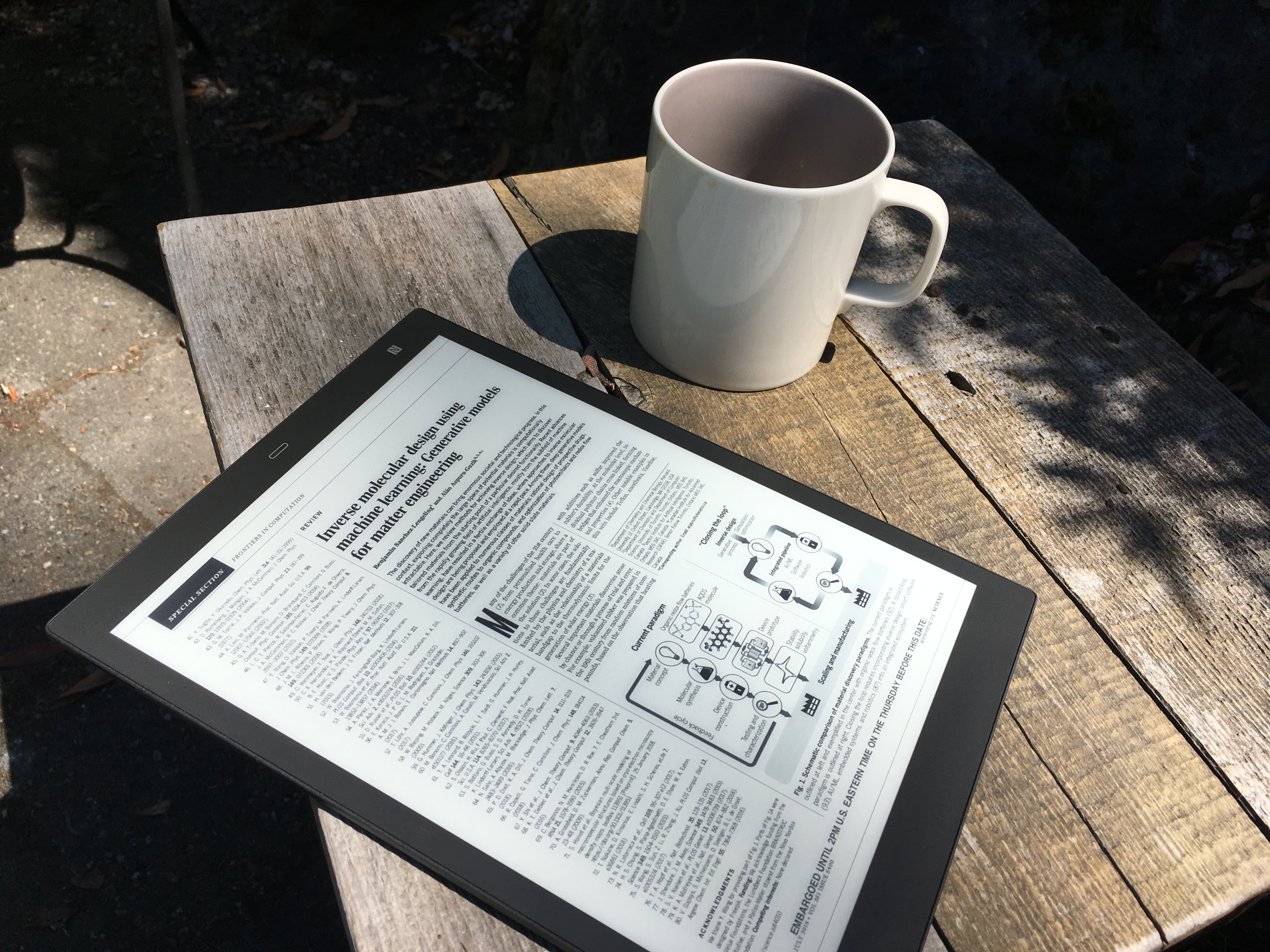 Mainly I just enjoyed how light and simple the thing is. Therealmost no menu system to speak of and the few functions you can do (zooming in and such) are totally straightforward. Whenever I got a big document, like todayFCC OIG report, or a set of upcoming scientific papers, my first thought was, &I&ll stick these on the Sony and read them on the couch.&
Mainly I just enjoyed how light and simple the thing is. Therealmost no menu system to speak of and the few functions you can do (zooming in and such) are totally straightforward. Whenever I got a big document, like todayFCC OIG report, or a set of upcoming scientific papers, my first thought was, &I&ll stick these on the Sony and read them on the couch.&
Although I value its simplicity, it really could use a bit more functionality. A note-taking app that works with a Bluetooth keyboard, for instance, or synchronizing with your Simplenote or Pocket account. The reMarkable is still limited as well, but its excellent stylus (suitable for sketching) and cloud service help justify the price.
I have to send this thing back now, which is a shame because itdefinitely a handy device. Of course, the $600 price tag makes it rather a niche one as well — but perhaps itthe kind of thing that fills out the budget of an IT upgrade or grant proposal.
- Details
- Category: Technology
Read more: Sony’s 10″ Digital Paper Tablet is an ultra-light reading companion that needs to do more
Write comment (95 Comments)Adam Pittenger knows that moving is tough — after all, he said hemoved eight times in the past seven years.
Pittenger said that there are several reasons why the process can be stressful, like the fact that most people aren&t experts on moving, since they don&t do it as often as him (seriously, eight times is crazy). Plus, therejust an enormous amount of planning and coordination required, whether ithiring movers, buying packing materials or putting your things into storage.
So Pittenger decided to make the whole process a lot easier by foundingMoved. Moving, he said, &doesn&t have to be that stressful,& because with Moved, you get &a personal assistant coordinating all the aspects of your move.&
Moved is announcing that itraised $3.2 million in seed funding from LoweVentures (the early-stage investment arm of the home improvement giant), FJ Labs, AngelPad, Real Estate Technology Ventures and others.
To sign up for Moved, you fill out a questionnaire about where you&re moving to and from, and what kinds of services you need. Moved (available via desktop web or mobile app) will then reach out to movers and provide you with multiple quotes from which you can choose.
And while, as Pittenger put it, &the immediate thing you need to do is book the movers,& Moved offers a broader range of services, like ordering packing supplies, helping you donate stuff you don&t need anymore, finding a storage unit, updating your address, finding painters and more.
Moving can also be expensive, so the company hasannounced a partnership with Affirm, where Affirmfinancing will allow you to break up the moving costs into monthly payments.
To be clear, Moved isn&t doing the moving itself — instead, itbasically connecting you to a marketplace of movers and other service providers. Pittenger said the company is &very strict about the suppliers and the vendors& and will remove them if customers aren&t happy with their experience.
Moved is managing all of this through a real, human assistant who can help you figure out what you need, handle the scheduling and serve as a &consumer advocate& who ensures that you&re not getting ripped off.
Pittenger said the service is free for consumers, with a fee charged to vendors at the time of booking. And itavailable throughout the United States.
- Details
- Category: Technology
Read more: Lowe’s Ventures backs Moved, a startup that makes moving less stressful
Write comment (100 Comments)Internet service provider Starry announced today the launch of its Starry Connect program with a pilot through Boston Housing Authority (BHA) to help provide free access to internet for residents living in one of the citypublic housing apartment complexes.
The Boston-based startup launched in 2016 with a plan to provide internet access through a spoke-and-wheel system of transmitters and access points. This point-to-multipoint system uses a phased array laser on top of a city building to send a 5G signal out that users can connect to via Starry Points that can be installed at a window or personal roof.
&Access to high-speed broadband is critical for education, communication, and personal and professional development, and yet today, many people still lack access to a basic, affordable, and reliable internet connection,& said Chet Kanojia, co-founder and CEO, in a statement. &Thatwhy we&re excited to partner with the Boston Housing Authority to devise creative solutions to help get more of their residents online and engaged with the critical services they need.&
With the program Starry launched today, residents of the public housing apartment building will be able to access free Wi-Fi in the buildingcommon area, hallways and new computer lab.
Virginia Lam Abrams, Starry senior vice president of communications and government relations, told TechCrunch that some residents may also be able to access the signal in their rooms, but the primary focus for this installation is to provide common area access for these primarily elderly and disabled residents.
Because Starry Connectpilot launch in the BHA building is part of the Boston public housing system, residents will receive free connection, but Starry also has plans to provide low-cost pricing options for residents living in affordable housing, as well.
The program has no set end date, says Abrams, but the company has plans to check in with residents in a few months to see where the program is succeeding and where it can be improved. Following this initial pilot launch, Abrams says that Starry has hopes to expand into other BHA communities, as well as public and affordable housing in other U.S. cities.
Since its launch, the startup has expanded into Los Angeles and Washington, D.C., and following a $100,000 million funding round it closed this July, has plans to scale and expand into more cities in the coming year, including Houston, Chicago, San Francisco and Portland, Ore.
- Details
- Category: Technology
Investors definitely aren&t stoked by the deafening silence coming from Teslaafter its chief executive announced in a tweet that he plans to drop a fat sack of cash on public shareholders in a bid to take the company private.
Tesla shares have tumbled from their post-tweet highs as investors are now left with the embers of what is increasingly looking like a Musk-induced pipe dream to lift the economic burdens the company faces by delisting it.
At the close of the market Tesla shares were down $17.89, to $352.45, basically erasing the gains it had earned based on speculation of an acquirer at a $420 price tag.

Days after Tesla chief executive Elon Musk tweeted a $420 per share buyout offer for the company, no new details have emerged and several potential contenders for Teslawhite knight have basically said &It wasn&t me.&
Reports fromThe New York Times, Axios and Bloomberg indicate that none of the likely buyers — the private equity firms, multinational banks, sovereign wealth funds or SoftBank — had approached or been approached by Tesla about the take-private transaction.
Dan Primack reported in Axios that &itnone of the usual suspects on the debt side (i.e. big Wall Street banks). Nor many on the equity side, such as big strategics (not Apple or Uber), private equity (not KKR, Mithril, Silver Lake, TPG, etc.) nor deeper financial pockets (not SoftBank or Mubadala).&
Thatkind of everyone that would be involved in what would be the biggest take-private deal in history (Primack valued Tesla at around $85 billion including debt).
Indeed, the New York Times noted that Wall Street banks are only now looking at ways to get in on the action.
Fromthe Times&report:
Executives at banks including Goldman Sachs and Citigroup are discussing ways a deal could be structured, angling to land the potentially prestigious assignment of taking the maker of electric cars off public markets, according to people familiar with the discussions. Bankers and lawyers on Wall Street said any deal is likely to be valued at $10 billion to $20 billion.
The $20 billion figure, far lower than what would be required for full privatization, assumes that Tesla is only looking to reduce the number of shareholders on its cap table so that it is no longer required to list on a major exchange. The argument is that with fewer shareholders, the company would not be subject to the whims of short sellers as easily as it is on the open markets.
Thatthe publicly stated rationale that Musk has given for his desire to take the company private.
While some speculate about what Elon may have been smoking when he made his (potential) bid public on Twitter, SEC regulators are more concerned with whether he&d told investors he had a quality deal instead of just shake.
Clouding the picture is the large stake that Saudi Arabiainvestment fund had taken in the company right before Musk baked short sellers& positions with the buyout tweet and the promise of financing.
Some conspiracy-minded speculators on HackerNews even theorized that the tweet was an attempt to forestall a hostile takeover from the Saudis.
No matter the rationale, Musk may have more to worry about than just Teslastock price should more detailed plans of the financing not materialize. The Securities and Exchange Commission is knocking, and they don&t take too kindly to the practice of defrauding investors.
- Details
- Category: Technology
Read more: With no white knight in sight, Tesla shares plummet from Musk’s tweet-related highs
Write comment (97 Comments)Samsung introduced a wide range of gadgets and upgrades today at its Unpacked event in Brooklyn. The overarching theme of the event centered on increased productivity throughout its connected ecosystem with performance improvements across the board.
Here are seven takeaways from Samsung Unpacked:
1. Note 9 rumors are confirmed
Samsunglatest phablet was introduced this afternoon without much surprise after weeks of leaks, speculation and even a photo of CEO DJ Koh using the phone in public made their rounds online. Little has changed aesthetically on this yearNote, aside from a few new colors, a shifted fingerprint scanner and a screen thata fraction of an inch larger than its predecessor. The one improvement that does stand out, however, is found in the Notebattery, which now measures 4,000mAh hours — thata 700mAh jump over the Note 8. Samsung is on the offensive this time around and made sure to highlight its eight-point safety check the company instituted after the firestorm of Note 7 batteries exploding.
2. Increased functionality on the S-Pen
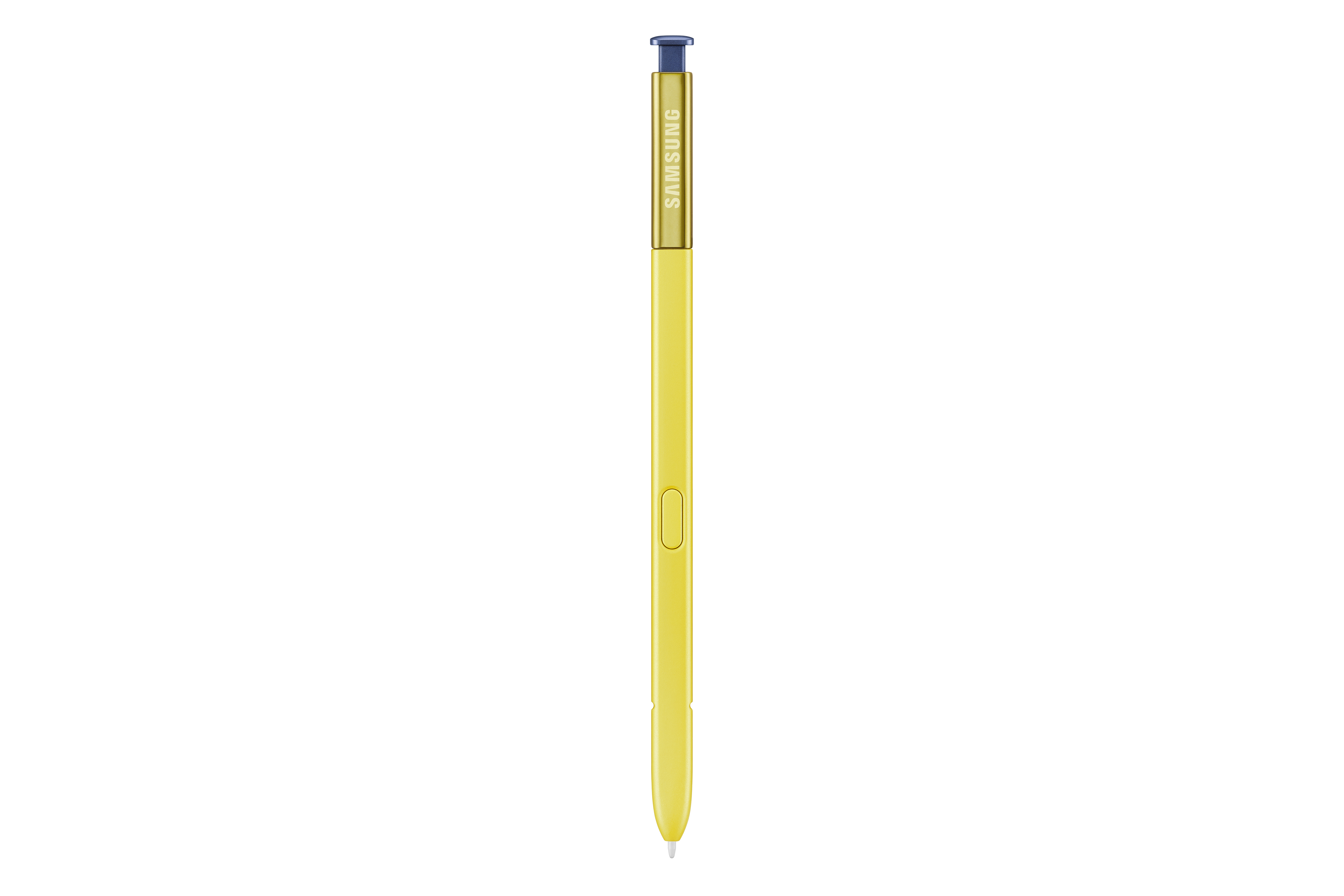
Samsungstylus got its own reboot today with a focus on performance. The company has equipped the S-Pen with Bluetooth low energy, allowing users to untether themselves from the phone and use the stylus as a remote to take pictures, advance slideshows or play music. Samsung also said developers will be able to incorporate BLE into their apps later this year.
3. The new Galaxy Watch seeks mainstream adoption

While Note 9 rumors were swirling leading up to todayevent, Samsung did a better job at keeping its new Galaxy Watch under wraps. The companylatest smartwatch will come in two sizes, an improvement from previous Samsung watches that were too large for many wrists. Samsung beat Apple to the draw by introducing LTE functionality on the Galaxy Watch and itsticking with Tizen as an OS, rather than switching to Android Wear.
4. Bixby gets more conversational
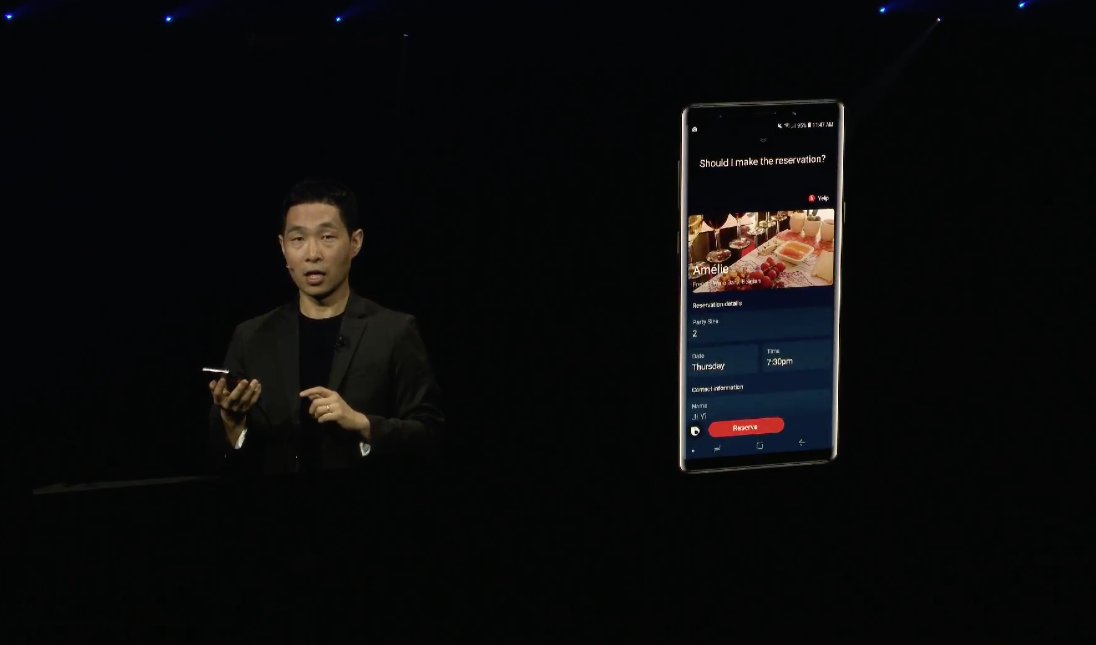
Samsung demoed an updated version of Bixby, the companyvoice assistant that saw much backlash when it was released last year, due to its lackluster performance. Luckily, thatchanged, and at todayevent Samsung showed how Bixby will carry on conversations and answer follow-up questions. The upgrade also features a range of app integrations with Yelp, Uber, Ticketmaster and more, allowing users to make reservations, hail rides and buy tickets even if they don&t have the app installed on their phone. Samsung also noted that Bixby will learn from your past decisions to better serve requests in the future. For example, if you&ve asked for French restaurants in the past, Bixby will generate other French restaurants in future requests related to food.
5. Samsung is (finally) getting into the smart speaker game
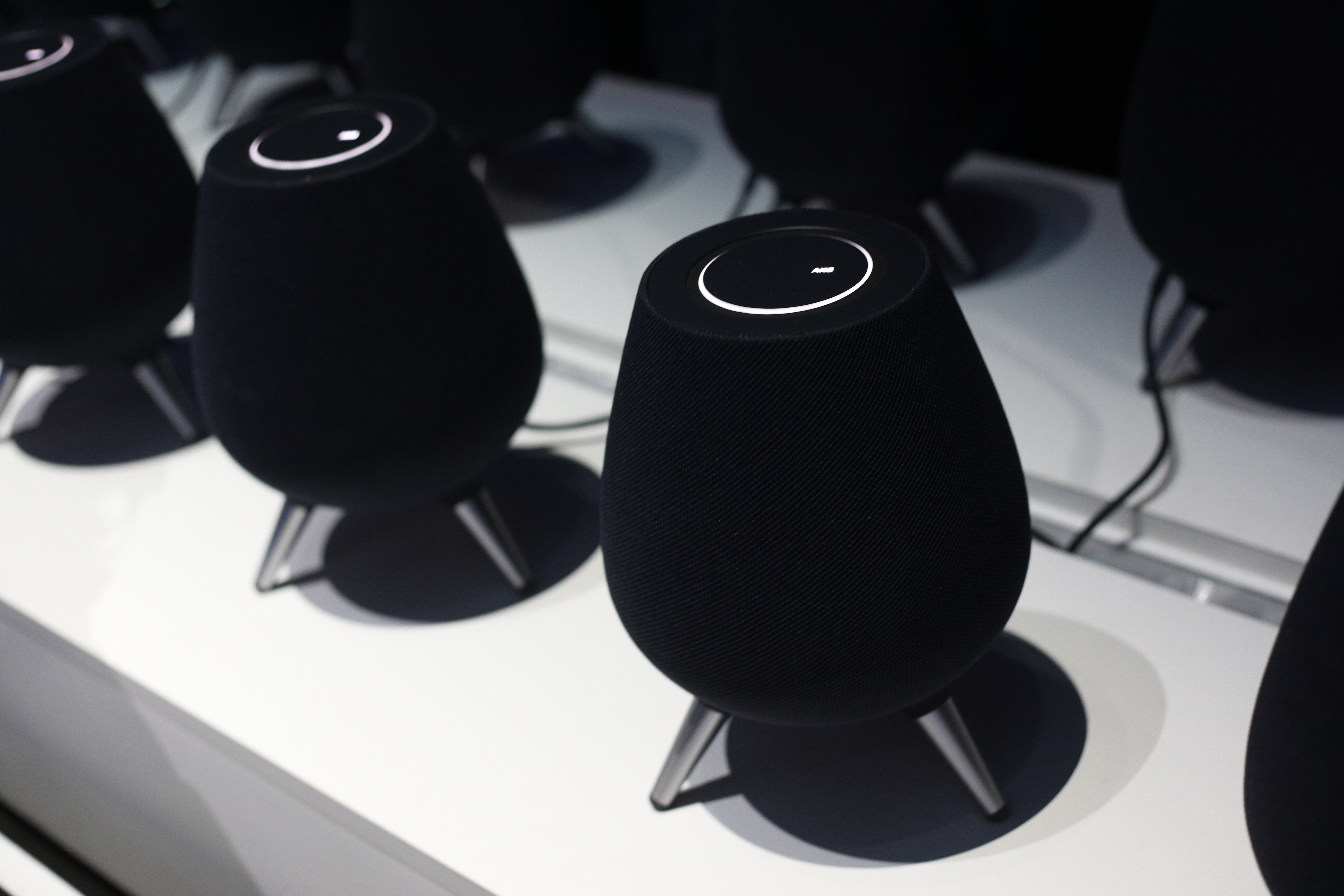
Improvements to Bixby were made even more apparent when Samsung unveiled its own smart speaker at todayevent. The Galaxy Home features a cloth covering and a tripod stand with a built-in subwoofer and eight microphones designed for far-field communication thatseen on other smart speakers. Much like the initial announcement of the HomePod, there wasn&t much information on a release date or price. For now, the product is only listed as &coming soon.&
6. Spotify integration allows for seamless cross-listening experience

To go along with its new smart speaker, Samsung announced a partnership with Spotify, cementing the Swedish streaming service as the preferred music supplier on Samsung devices. Spotify will now be part of the set-up process for Samsung devices, and the integration allows for a seamless cross-devices listening experience within the Samsung ecosystem. The partnership also pins Samsung directly up against Apple and the HomePodexclusive integration with Apple Music.
7. Fortnite for Android launches as a Samsung exclusive
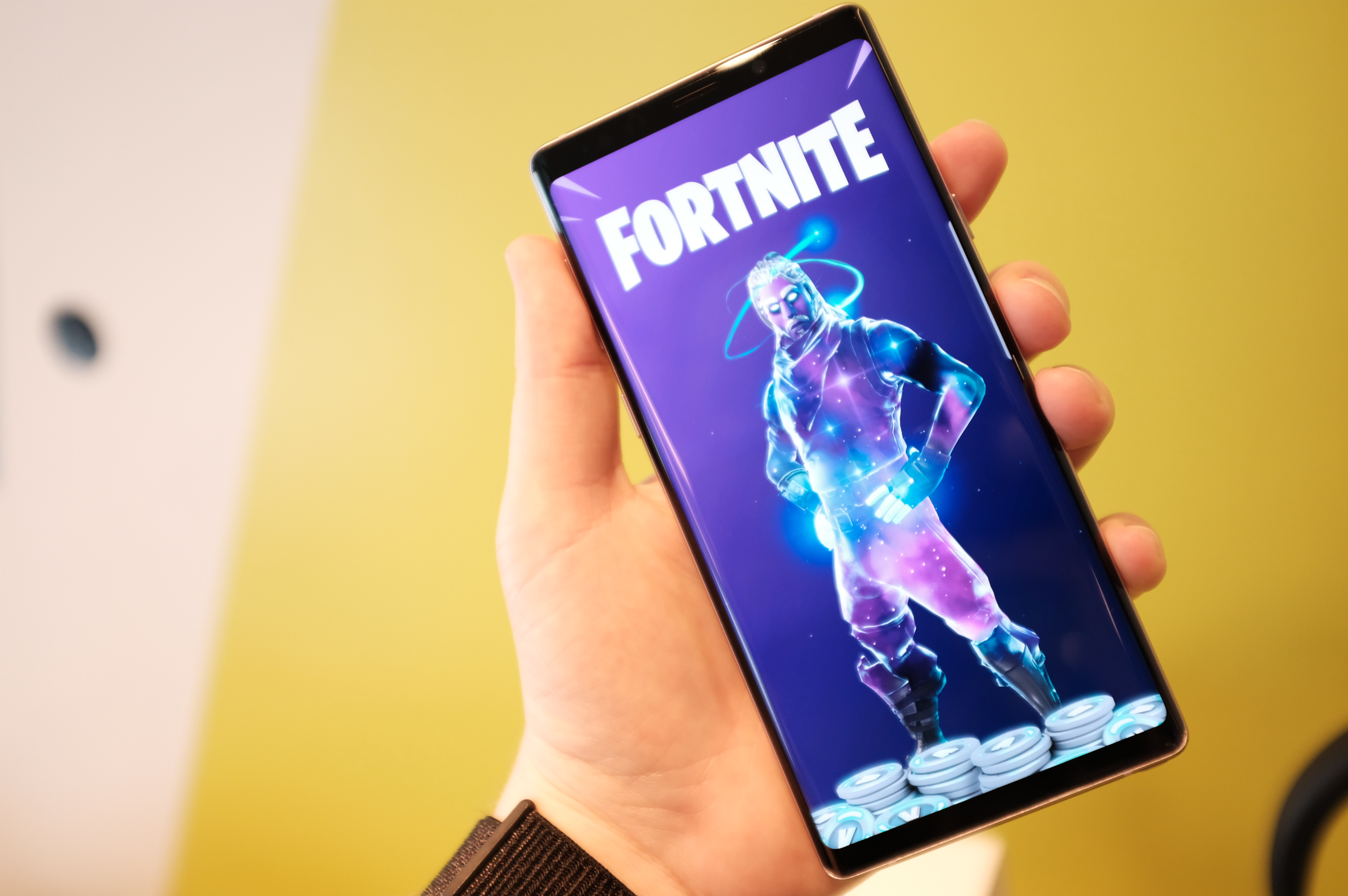
At long last, Fortnite is coming to Android this summer. The insanely popular survival game will be available for Galaxy users with an S7 or higher, and the 6.4-inch display on the Note 9 makes for a mobile gaming powerhouse. Starting today, the title will appear on Galaxy devices& game launcher and will remain a Samsung exclusive until the 12th — at which point it will most likely be available to all Android users.
- Details
- Category: Technology
Read more: 7 takeaways from Samsung Unpacked 2018
Write comment (92 Comments)Page 4493 of 5614

 9
9






 (@levelsio) August 7, 2018
(@levelsio) August 7, 2018